
How to Use C Step-Down Module: Examples, Pinouts, and Specs
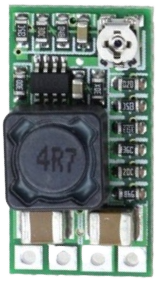
 Design with C Step-Down Module in Cirkit Designer
Design with C Step-Down Module in Cirkit DesignerIntroduction
The C Step-Down Module, commonly referred to as a buck converter, is an essential component in power management and regulation. It efficiently converts a higher input voltage to a lower output voltage, maintaining a stable and regulated output for a variety of electronic devices. This module is widely used in battery-operated devices, embedded systems, and any application where voltage regulation is critical to protect sensitive electronics.
Explore Projects Built with C Step-Down Module
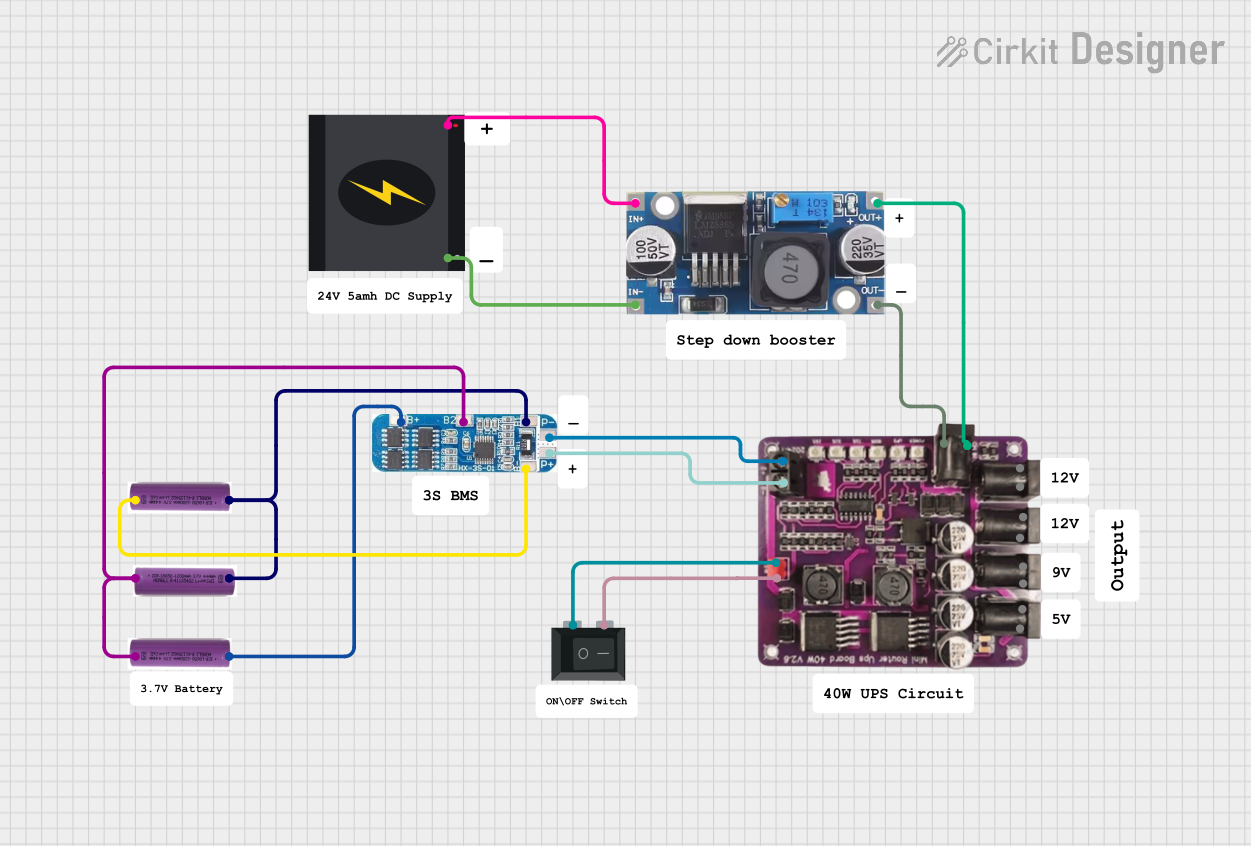
 Open Project in Cirkit Designer
Open Project in Cirkit Designer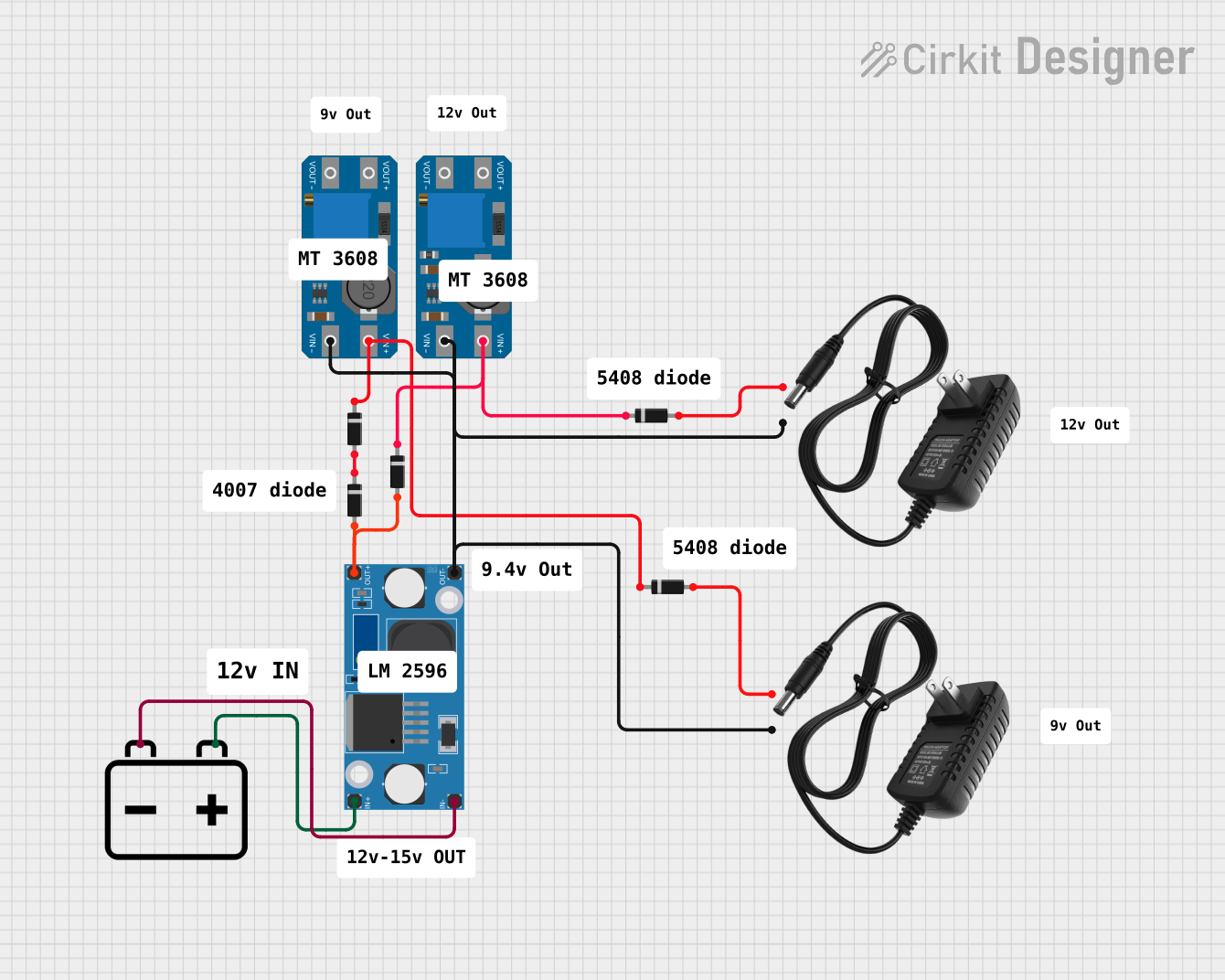
 Open Project in Cirkit Designer
Open Project in Cirkit Designer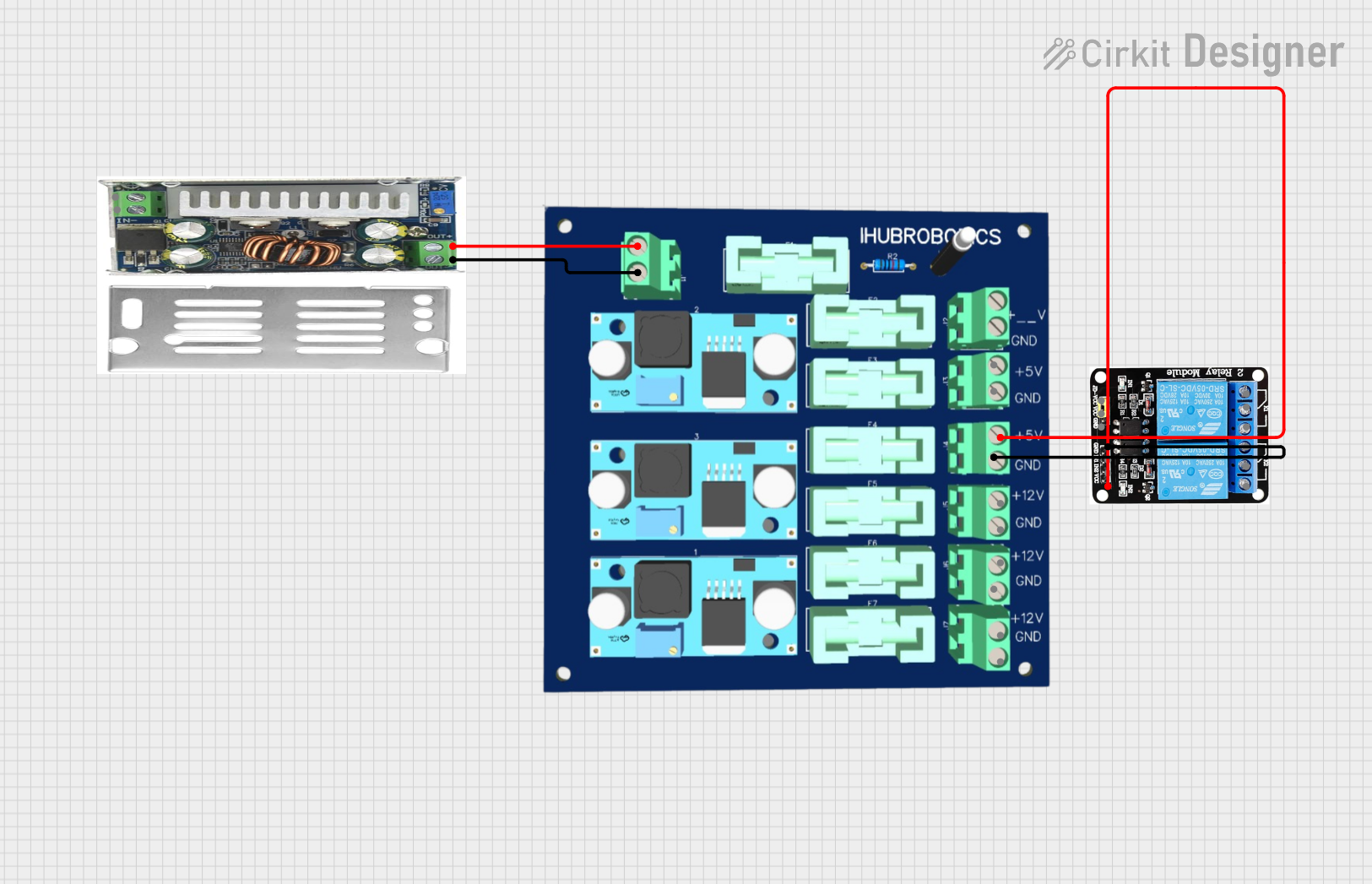
 Open Project in Cirkit Designer
Open Project in Cirkit Designer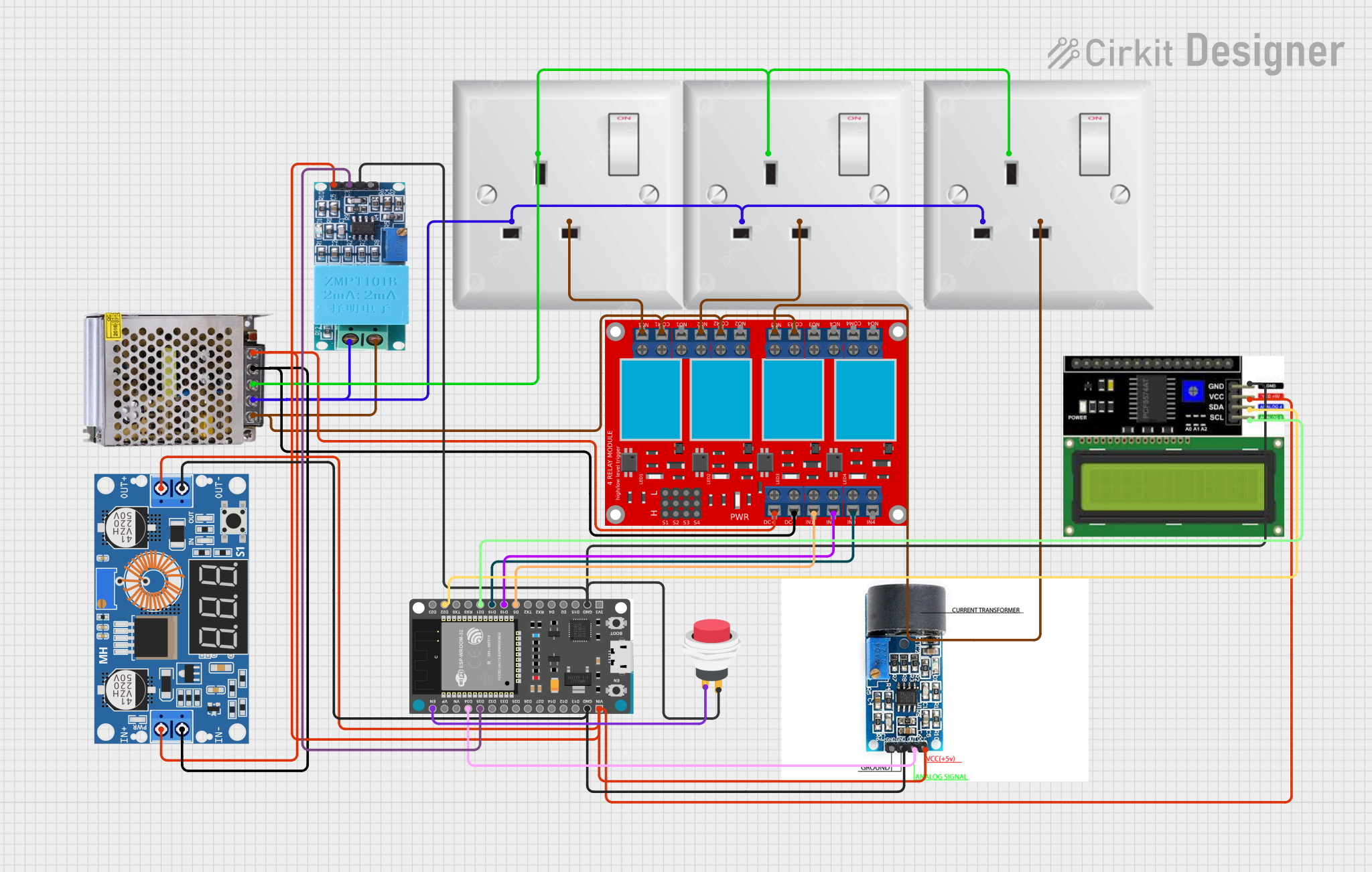
 Open Project in Cirkit Designer
Open Project in Cirkit DesignerExplore Projects Built with C Step-Down Module

 Open Project in Cirkit Designer
Open Project in Cirkit Designer
 Open Project in Cirkit Designer
Open Project in Cirkit Designer
 Open Project in Cirkit Designer
Open Project in Cirkit Designer
 Open Project in Cirkit Designer
Open Project in Cirkit DesignerCommon Applications and Use Cases
- Power supply for embedded systems
- Voltage regulation for battery-operated devices
- Automotive electronics to step down battery voltage
- Renewable energy systems, such as solar power converters
- LED drivers for lighting systems
Technical Specifications
Key Technical Details
| Parameter | Value | Description |
|---|---|---|
| Input Voltage | XX V to XX V | The voltage range the module can accept. |
| Output Voltage | XX V to XX V | The regulated voltage the module provides. |
| Maximum Output Current | XX A | The maximum current the module can supply. |
| Efficiency | XX% | Typical efficiency at full load. |
| Switching Frequency | XX kHz | Frequency at which the module switches. |
| Operating Temperature | XX°C to XX°C | Safe ambient temperature range. |
Pin Configuration and Descriptions
| Pin Number | Name | Description |
|---|---|---|
| 1 | VIN | Input voltage. Connect to the positive voltage supply. |
| 2 | GND | Ground. Connect to the system ground. |
| 3 | VOUT | Regulated output voltage. Connect to the load. |
| 4 | ADJ | Adjustment pin. Used to set the output voltage. |
| 5 | EN | Enable pin. Logic high enables the module. |
Usage Instructions
How to Use the Component in a Circuit
- Connect the positive terminal of your voltage source to the VIN pin of the module.
- Connect the ground terminal of your voltage source to the GND pin.
- Set the desired output voltage by adjusting the potentiometer connected to the ADJ pin, if applicable.
- Connect the load to the VOUT pin.
- Apply a logic high signal to the EN pin to enable the module.
Important Considerations and Best Practices
- Ensure that the input voltage does not exceed the maximum rating of the module.
- Do not exceed the maximum output current to prevent overheating and potential damage.
- Use proper heat sinking if operating near the maximum output current.
- Keep the switching frequency in mind when designing the circuit to avoid interference with other components.
- Place capacitors close to the input and output pins for better filtering and stability.
Troubleshooting and FAQs
Common Issues Users Might Face
- Output voltage is too high or too low: Check the ADJ pin setting and ensure it is properly adjusted.
- Module is not powering on: Verify that the EN pin is receiving a logic high signal.
- Module is overheating: Ensure the current draw is within the module's limits and improve heat dissipation.
Solutions and Tips for Troubleshooting
- If the output voltage is incorrect, recalibrate the potentiometer connected to the ADJ pin.
- Confirm that all connections are secure and there are no loose wires or cold solder joints.
- If the module is not responding, check the input voltage and the EN pin voltage.
- For overheating issues, reduce the load current or enhance cooling with a heatsink or fan.
FAQs
Q: Can I use the C Step-Down Module to charge batteries? A: Yes, but ensure the output voltage is appropriate for the battery and include proper charging circuitry.
Q: What should I do if the output voltage fluctuates? A: Fluctuations can be due to load variations or insufficient filtering. Add capacitors to the input and output for stability.
Q: Is it possible to synchronize the switching frequency with other devices? A: This depends on the specific module. Some step-down modules offer a synchronization input for this purpose.
Example Code for Arduino UNO
// Example code to control the C Step-Down Module with an Arduino UNO
const int enablePin = 3; // Connect to the EN pin of the module
void setup() {
pinMode(enablePin, OUTPUT);
digitalWrite(enablePin, LOW); // Start with the module disabled
}
void loop() {
// Enable the module
digitalWrite(enablePin, HIGH);
delay(5000); // Keep the module enabled for 5 seconds
// Disable the module
digitalWrite(enablePin, LOW);
delay(5000); // Keep the module disabled for 5 seconds
}
Note: This code is a simple example of how to enable and disable the C Step-Down Module using an Arduino UNO. Adjust the code to suit the specific requirements of your application.